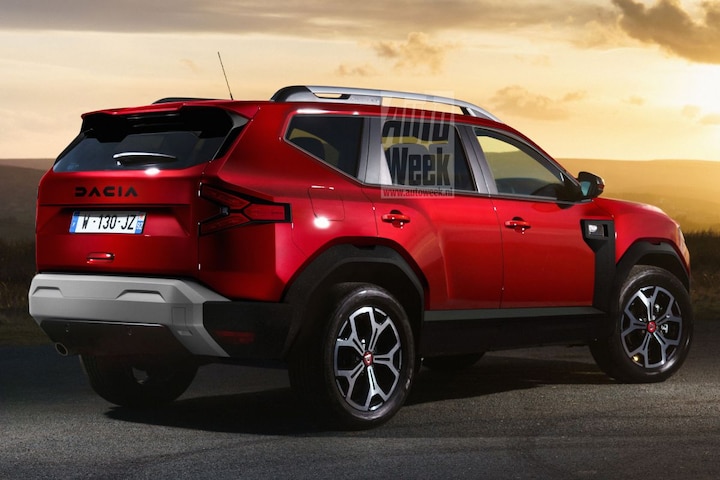Dacia appears to be a formula for success for parent company Renault. The Romanian budget branch will soon literally be looking higher with a tough SUV that we call the Bigster for the time being. He taps into a new clientele.
- Production version Bigster Concept
- Tough, but still ‘budget’
- Also as a hybrid
The name ‘Bigster’ may sound like an all too easy variation on ‘Duster’, but is really used by Dacia itself. The Bigster Concept was presented in January and generally looks quite production-ready. Add to that the fact that Dacia has already announced that it will soon come with a car in the C-segment and you know enough: that Bigster will just come. Due to the rise of the SUV, that C-segment is a bit more difficult to define than a few years ago, but count on the Bigster to be significantly larger than the Duster. With a length of 4.60 meters, it is already about 28 centimeters longer, but the Bigster is also wider and higher. Like the new Sandero, the latest addition to the Dacia range, the Bigster will soon be built on a simplified version of Renault’s modular CMF platform. The power sources also simply come from France, with the new Sandero proving that the most modern engines do not have to pass by the nose of Dacia. The 92 hp TCe 90 three-cylinder from the Duster is perhaps considered to be inadequate, but a 130 or 140 hp version of the well-known 1.3 four-cylinder seems perfect for the Bigster. Dacia is said to even have access to E-Tech hybrid technology from Renault, with which a (plug-in) hybrid with Dacia logo is suddenly possible. That is good news for the Netherlands, because low CO2 emissions and therefore the same bpm amount mean that such a variant can be marketed relatively favorably here. We do not have to expect an electric Bigster: Dacia keeps it in that area for the time being with the much smaller Spring.
Cult
The products of budget brands are logically not the most imaginative four-wheelers, but that changes somewhat when it comes to an SUV. The simple, raw character of such a ‘budget mobile’ suddenly becomes ‘cult’ when it is combined with a lot of ground clearance and preferably a simple four-wheel drive system. The Lada Niva is perhaps the best example in that respect, but the Duster is clearly more ‘sexy’ than a Sandero or Lodgy. That promises something for the Bigster. In addition to being larger, the new Dacia will soon be a lot squarer than the Duster, where it looks tough and powerful. Strikingly frivolous are the V-shaped rear lights, which should make the Bigster easily recognizable even in the dark. The light clusters accentuate the broad ‘shoulders’ of the car, which is solidly expanded at the wheel arches. Skidplate-like elements in the front and rear bumpers and a sturdy, linear combination of headlights and grille complete the picture. At the same time, Dacia does not want to hide the budget approach. Large pieces of plastic therefore simply remain black and unnecessary frills shine through their absence, although design undeniably plays a greater role than in the early days of the reborn brand.

Dacia Bigster (Illustration: Larson)
Lodgy replacement
With the Sandero, Dacia has already shown that it can make very nice interiors with a limited budget. The Bigster fits that image, but again combined with more square shapes and clean lines. Again, the forced simplicity fits well into the picture, because much more expensive SUVs often get functional-looking elements that should underline the tough character. The square carriage also proves its usefulness inside, because that shape provides a lot of space. The arrival of a third row of seats is even likely, so that the Bigster can also serve as an alternative to Dacia’s current seven-seater, the Lodgy. The SUV is undoubtedly more expensive than the Lodgy, but at the same time appeals to a new target group with its powerful appearance. For space seekers with a smaller budget, there will be a new Logan MCV, which is a lot more spacious than its predecessor. Whether the Bigster can really do something in rough terrain remains to be seen. Certainly in a country like the Netherlands, the majority of the copies will simply be ordered with front-wheel drive and a modest petrol engine, although Dacia does deliver a four-wheel drive variant of the Duster.
New corporate identity
The Bigster is probably the car with which Dacia launches a new corporate identity. The current shield-shaped emblem is making way for a tighter one, in which the leading role is reserved for the ‘D’ and the ‘C’ from the brand name. This is written out completely on the tailgate in a similar style. It is not yet clear when we can expect this metamorphosis. Renault indicates that it has seven new models in the planning for both budget branches, Dacia and Lada, between now and 2025. The Bigster is part of that model offensive and will probably follow as the second model, after the aforementioned Logan MCV. (JL)